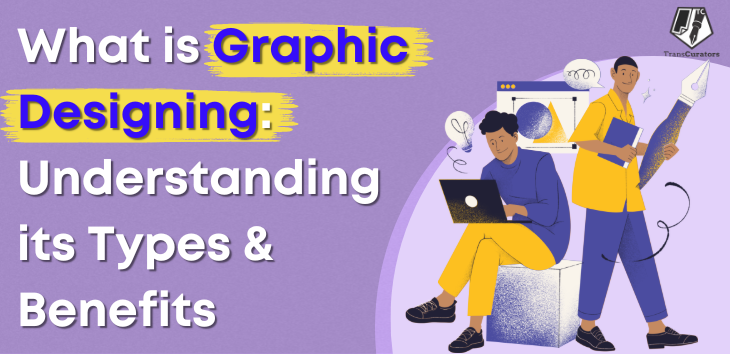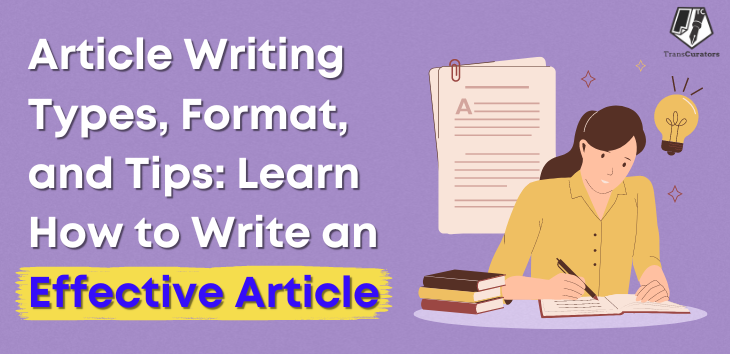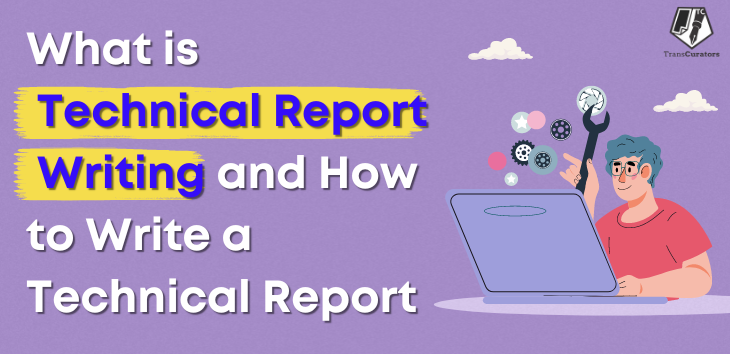
Graphic design stands at the intersection of art and communication. Graphic designing’s meaning revolves around the strategic use of typography, images, colours, and layout to communicate concepts effectively. It is not just to simply make things look visually good; the design must also serve its intended purpose, whether that is to inform, persuade, or entertain. Graphic designers maximise the user experience by using text and images to fulfil users’ requirements and focusing on the logic of displaying pieces in interactive designs. In this blog, we will look at the key components, benefits, and types of graphic design. We will also explore the scope and the career options available in this dynamic field.
What is Graphic Designing?
The graphic designing definition extends beyond aesthetics to encompass functionality and user experience. Graphic design is more than just creating beautiful images. It is about visually addressing issues and generating practical and aesthetically beautiful designs. The primary purpose of graphic design is to communicate information clearly and efficiently. Designers use typography, colour, images, and layout to create compelling visuals that express specific ideas or information. Graphic designers work on diverse projects, including logos, brochures, ads, websites, and product packaging, customising each design to the needs of their audience and the medium used.
Graphic design is a blend of creativity and technical skills. Designers commonly leverage software such as Adobe Photoshop, Illustrator, and InDesign to bring their concepts to life. They determine balance, contrast, and hierarchy to make their designs visually appealing and communicate the intended meaning. Excellent graphic design attracts viewers and streamlines the information it contains. It is essential to branding and marketing as it makes businesses stand out and build a connection with their target market. Graphic designers produce images to educate, persuade, and entertain by combining art and technology.
Types of Graphic Designing
Graphic design includes different types of design work, each with its focus and applications. Understanding the various kinds of graphic design will help you determine your skills and interests. Here are the eight major types of graphic design:
1. Branding and Visual Identity
Branding and Visual Identity Graphic design is concerned with the creation of visual elements of a brand. This design style influences how a brand is perceived by its target audience and maintains consistency across all visual communications. Designers build extensive brand rules while working on branding and visual identities. These rules specify how visual elements should be utilised in various settings to ensure consistency. This covers everything from business cards and stationery to digital assets like websites and social media profiles.
Key Elements:
- Logos: Create unique and memorable logos that capture the soul of your brand. An excellent logo is simple, unforgettable, and versatile.
- Colour palettes: Select colours that represent the brand’s personality and principles. Colours elicit emotions and connections, so choosing the right palette is critical.
- Typography: Choose fonts that reflect the brand’s message and tone. Typography also contributes significantly to the readability and beauty of the brand’s assets.
- Imagery: Use visuals and graphics aligned with the brand’s identity. Imagery should be consistent with the brand’s style and resonate with its target demographic.
2. Graphic Design for Marketing and Advertising
Graphic design for marketing and advertising aims to promote products, services, or ideas. Designers in this field develop captivating images that successfully express messages to motivate consumers to take action. In this profession, you work closely with marketing teams to ensure your designs are consistent with campaign objectives and connect with the intended audience. Effective marketing and advertising design can greatly impact customer behaviour and increase brand visibility.
Key Elements:
- Print Ads: Design advertisements for newspapers, magazines, and billboards. Print advertisements need to be attractive and communicate information quickly.
- Digital Ads: Create banner advertising, social media graphics, and email newsletters to promote your business. Understanding digital platforms, as well as how to engage users online, is required for online ads.
- Posters and Flyers: Create promotional materials for events and local advertising, such as posters and flyers. These should be both visually appealing and helpful.
- Social Media Content: Develop images for sites like Instagram, Facebook, and Twitter. To increase reach, social media visuals should be engaging and shareable.
3. Print Design
Creating visual content for printed products is called print design. This kind of design requires substantial layout, typography, colour theory, and printing knowledge. You work on various print design projects, demanding careful attention to detail and superior quality. You work with printers to ensure the finished product meets your design specifications and appears as intended.
Key Elements:
- Brochures: Create informational, visually appealing brochures for businesses and events. Brochures must include both text and photos to convey precise information.
- Posters: Make eye-catching posters for advertising, events, and promotions. Posters should grab attention and deliver the message fast.
- Business Cards: Design professional, distinctive business cards. A well-designed business card can leave a lasting impression.
- Packaging: Create package designs that protect the products while also attracting buyers. Designing packaging requires taking aesthetics and functionality into account.
4. Digital Graphic Design
Digital graphic design aims to provide visually appealing content for digital platforms. This includes websites, mobile apps, and social media. This type of design needs designers to be mindful of digital media’s specific requirements and constraints. Staying current with the newest digital design trends and technology is critical in digital graphic design. You often interact with web developers and digital marketers to ensure your designs are adequately deployed and fulfil their intended purpose.
Key Elements:
- Web Design: Design user-friendly and visually attractive websites. Web design involves layout, navigation, and usability concerns.
- App Design: Make intuitive and engaging interfaces for mobile apps. App design demands an understanding of user experience (UX) principles.
- Social Media Graphics: Develop visuals tailored for different social media platforms. Social media graphics should be optimised for each platform’s specifications and audience.
- Digital Ads: Design advertisements for online marketing campaigns. Digital ads need to be effective and drive clicks or conversions.
5. Packaging Design
Packaging design is developing a product’s packages’ visual and structural elements. This design style must be appealing and functional and must represent the brand’s identity. Packaging design requires a mix of aesthetics and functionality. You must understand the product’s intended audience and create designs that stand out on shelves while providing the necessary details.
Key Elements:
- Labels: Create informative, appealing labels. Labels should provide important information while also engaging customers.
- Boxes & Containers: Create packaging that protects the goods while being attractive to consumers. Aesthetics and utility should both be considered while designing.
- Brand Consistency: Ensure that the packaging matches the brand’s visual identity. Consistency helps to increase brand identification.
- Sustainability: Incorporate environmentally friendly materials and production practices. Sustainable packaging is growing and becoming increasingly essential for consumers and businesses.
6. Editorial and Publishing
Creating layouts and visual content for print and digital media is an editorial and publishing design component. This type of design calls for a strong attention to detail and a solid grasp of layout and typographic concepts. You coordinate closely with editors and authors to ensure the design complements the content. Your goal is to produce readable, visually engaging publications that captivate readers.
Key Elements:
- Magazines: Design layouts for articles, photos, and advertisements. Magazine design must be visually fascinating and easy to navigate.
- Books: Create covers and interior layouts for novels, textbooks, and children’s books. Book design concerns balancing text and images to enhance readability.
- Newspapers: Design engaging and easy-to-read newspaper layouts. Newspaper design prioritises clarity and organisation.
- E-books: Create digital versions of books and magazines with interactive features. E-book design involves creating a user-friendly reading experience for digital devices.
7. Environmental Graphic Design
Environmental graphic design aims to create visual elements for physical spaces. This design uses effective signage, wayfinding systems, and environmental graphics to improve the user experience within a space. User interaction and the physical surroundings are considered in environmental graphic design. To enhance people’s ability to navigate and experience spaces, your designs must be visually appealing and functional.
Key Elements:
- Signage: Design signs that guide and notify visitors. Effective signage enhances navigation and delivers essential information.
- Wayfinding Systems: Design navigational aids for complex environments like airports and hospitals. Wayfinding design involves creating a precise and intuitive navigation system.
- Exhibition Design: Create displays for museums, galleries, and trade shows. Exhibition design should be engaging and educational.
- Public Installations: Develop large-scale graphics for public spaces. Public installations can be functional and decorative.
8. Motion Design and Animation
Motion design and animation are the methods of producing animated graphics for numerous media platforms. This type of design brings still images to life with movement, making the material more lively and engaging. Motion design and animation professionals utilise Adobe After Effects and Cinema 4D technologies to create captivating visual storytelling. You collaborate with other creative professionals, such as video producers and coders, to bring your animations to life.
Key Elements:
- Animation: Create animations for advertisements, instructional videos, and entertainment. Animation provides movement in visuals, making them more attractive.
- Video Production: Incorporate visuals and animations into video content. Motion graphics can enhance storytelling and visual appeal.
- Visual Effects (VFX): Use special effects to improve video and film projects. VFX offers realistic or fantasy elements in visual media.
- Interactive Design: Create animations for websites and apps that respond to user interactions. Interactive animations improve user engagement.
Graphic design is a broad and dynamic field with several specialisations catering to various interests and talents. Each graphic design brings different challenges and opportunities, allowing designers to discover their expertise and grow in their chosen field. Branding and visual identity assist in creating and maintaining a consistent brand image across several media. Graphic design for marketing and advertising is concerned with developing visually appealing photos that successfully promote products and services. Print design is creating print materials, which requires meticulous attention to detail and a complete understanding of the printing process. Digital Graphic Design serves the demands of digital platforms, ensuring that designs are optimised for online use. Packaging design combines practicality and aesthetics to create appealing and functional packaging solutions. Editorial and publishing design produces visually appealing layouts for printed and digital media. Environmental Graphic Design enriches physical spaces through excellent signage and navigational assistance. Motion design and animation use movement to bring pictures to life, increasing the content’s dynamic and engaging nature. Understanding various types of graphic design can help you discover your interests and talents, allowing you to choose the right path for a fulfilling and successful career.
Benefits of Graphic Designing
Graphic design offers multiple benefits for individuals pursuing it as a profession and organisations using its potential. As a graphic designer, you can express your creativity, solve issues visually, and leave a lasting impression with your work. Effective graphic design can help businesses improve branding, attract customers, and convey ideas more effectively. Let’s look at the benefits of graphic design in more detail.
1. Enhances Brand Identity
One of the most important benefits of graphic design is its ability to strengthen a brand’s identity. Visually strong branding enables organisations to differentiate themselves in a competitive market. A consistent visual identity, including logos, colour schemes, and typography, ensures a business is easily identifiable. Consistent branding promotes customer trust and loyalty and increases sales and customer retention.
2. Communicates Messages Clearly
Graphic design simplifies complex ideas and communicates messages. Infographics, brochures, and social media graphics can utilise well-designed images to deliver information efficiently and quickly. Such clarity is essential in today’s fast-paced environment, where individuals often skim through content. Use captivating pictures to attract attention and guarantee your message is understood.
3. Boosts Sales and Market Position
Effective graphic design can significantly boost sales and market position. Visually appealing designs attract new consumers and motivate them to engage with your products or services. For example, a good package design can convince customers to prefer your product over a competitor’s. Similarly, well-designed advertising can increase click-through rates and conversions, leading to more sales and growth.
4. Fosters Creativity and Innovation
It provides an opportunity for people interested in pursuing a career in graphic design to foster creativity and innovation. You can try out multiple styles, approaches, and tools to help you bring your ideas to life. Your creative expression can be extremely rewarding and lead to innovative solutions to design challenges. The field of graphic design encourages you to think outside the box and continually refine your skills.
5. Enhances User Experience
Graphic design is critical to improving the user experience. In web and app design, simple and visually appealing interfaces make navigating and accessing information quicker for users. Good UX design decreases frustration while increasing user satisfaction, which results in extended site visits and increased engagement rates. Users who enjoyed a great experience are more likely to come back and suggest your website or app to others.
6. Builds Professionalism and Credibility
High-quality graphic design portrays a professional image and builds credibility. When firms invest in skilled design, they prioritise quality and attention to detail. This perspective can strengthen trust and make a company appear more reliable and established. Professional design can influence how a company is perceived, whether it be a well-designed logo, a sleek website, or polished marketing materials.
7. Supports Marketing Efforts
Leveraging graphic design contributes to marketing campaigns. Visual content is essential for social media marketing, email campaigns, and content marketing as it is more engaging and easily shared than text-only information. Solid graphics help organisations connect with their audience and achieve their marketing objectives by expanding the reach and effectiveness of their marketing initiatives. Creating visually exquisite and relevant content helps capture the audience’s attention and drive engagement.
8. Facilitates Effective Communication
Graphic design fills the gap between written content and visual elements, enabling better communication. Well-designed visuals increase the impact and readability of the text. For example, a well-designed infographic can present information in a visually appealing and digestible format, making complex information more accessible to understand. Combining text and images improves communication in general and helps ensure more effective delivery of messages.
9. Personal and Professional Growth
For individuals, a career in graphic design offers continuous opportunities for professional and personal growth. The field constantly evolves, with new trends, techniques, and technologies arising regularly. Keeping up with these changes allows you to keep your skills sharp and competitive in its marketplace. On top of that, working on multiple projects and partnering with clients from other industries increases your experience and strengthens your portfolio.
Conclusion
Graphic design surrounds us in everyday life and influences us in many ways. A well-crafted logo, such as McDonald’s golden arches, illustrates graphic design. Magazine covers with powerful headlines and captivating pictures are also graphic design examples. The user interface of your favourite app, with its clear icons and smooth navigation, relies on graphic design to enhance your experience. Graphic designers are also responsible for the colourful illustrations and compelling fonts on the packaging of your favourite cereal.
Graphic design is essential for visual communication. It blends creativity and technology to create informative, engaging, captivating visuals. Understanding graphic design can provide various opportunities, whether you are a business wanting to establish a strong brand identity or an individual passionate about the field. If you wish to advance your brand with stunning visuals or want to learn more, consider partnering with TransCurators. Let us help you make a lasting impression with our professional graphic design services. Let us help you bring your visual ideas to life. Contact us today to get started!
Frequently Asked Questions
A1. The basic graphic design elements include line, shape, colour, texture, space, form, and typography.
A2. Graphic designers commonly use Adobe Creative Suite (Photoshop, Illustrator, InDesign), Sketch, Figma, CorelDRAW, and Canva.
A3. Graphic design focuses on visual communication and problem-solving, while illustration involves creating custom images and drawings.
A4. Graphic design examples include logos, websites, advertisements, brochures, packaging, social media graphics, and more.
A5. The scope of graphic designing is vast, spanning industries such as advertising, marketing, publishing, web design, branding, packaging, and multimedia production.
A6. Common career paths include graphic designer, art director, UI/UX designer, illustrator, web designer, motion graphics designer, and brand designer.



